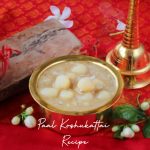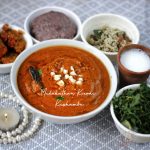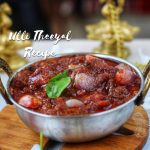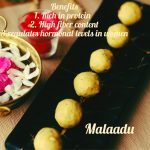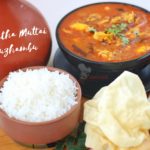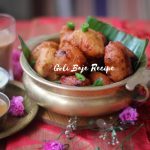Compliment the irresistible indulgence of "paal Kozhukatta" with pazham pori. Hold off on garnishing the paal kozhukatta with roasted coconut flakes and dry fruits until serving to keep the crunch intact. Enjoy the most comforting creamy taste of paalkozhukatta with Kerala's idyllic ambience of backwaters.
Kerala-style paal kozhukatta is a traditional South Indian dessert that features rice dumplings cooked in sweet coconut milk. It's a popular dish in Kerala and is often made during festivals and special occasions. Here's a recipe for Kerala-style paal kozhukatta:
Index:
Dive Into These Interesting Topics To Explore Unkonwn Facts About The Recipe And Its Land:
1. An Introduction On Kerala Cuisine
2. A Sneak Peek Into Kerala's Authentic Desserts
3. A Stunning Dessert With The Winning Trio
4. The Origin And History Of Kerala's Paal Kozhukatta
5. The Prevalence And Popularity Of Paal Kozhukatta In India And Abroad
6. Paal Kozhukatta And Similar Delicacies
7. Paal Kozhukatta : Its Religious And Cultural Connotation
8. Paal Kozhukatta :_ A Humble Treat
9. Needed Ingredients To Make The Best Paal Kozhukatta
10. Step Wise Directions To Make Delicious Paal Kozhukatta
11. Tips And Tricks To Get The Best Result
12. Faqs
13. Paal Kozhukatta In A Nutshell
14. Perfect Pairings For Paal Kozhukatta
15. Nutritional Value
16. An Alluring Native Scenario Where You Can Typically Enjoy The Paal Kozhukatta To The Fullest
17. The Takeaway
Kerala cuisine, known for its rich and diverse flavors, is a gastronomic delight that reflects the cultural heritage and geography of the southwestern Indian state of Kerala. Characterized by a harmonious blend of spices, coconut, and an abundance of fresh ingredients, Kerala cuisine is a testament to the state's lush landscapes and coastal access.
With a wide array of vegetarian and non-vegetarian dishes, the cuisine of Kerala offers a sensory journey through a tapestry of tastes, colors, and textures, making it a culinary experience that's cherished not only in India but also across the globe. From fiery curries to delicate coconut-based stews, and from fluffy rice preparations to crispy fried fish and from soft savories to crispy snacks, Kerala cuisine is a celebration of both tradition and innovation that continues to captivate food enthusiasts worldwide.
A Sneak Peek Into Kerala's Authentic Desserts:
Apart from the state's heavenly landscape and beautiful climate, Kerala cuisine is awesome and deeply rooted in tradition. Kerala's exquisite desserts are a testament to the state's culinary artistry and love for all things sweet. These delectable treats, often rooted in tradition, showcase the perfect balance of flavors, textures, and aromatic spices. From the iconic Kerala banana chips, crispy and savory, to the rich and creamy payasam varieties (rice pudding) made with coconut milk and jaggery, the desserts of Kerala are a delight for the senses.
Elaborate offerings like the layered and sweet Athirapally Achappam and the intricately prepared Unniyappam, fried to perfection, exemplify the attention to detail that goes into crafting these delicacies. The use of local ingredients such as ripe bananas, jack fruit, rice, and coconut lends a unique character to these desserts, making them not only a treat for the taste buds but also a cultural experience that is cherished by both the locals and the visitors alike.
A Stunning Dessert With The Winning Trio:
Paal Kozhukatta is a delightful dessert that beautifully combines these three key ingredients to create a sweet and comforting treat. Here's how it's traditionally prepared:
Rice Flour: Rice flour serves as the base for the dessert. It's mixed with water and a pinch of salt to form a dough, which is used to make dumplings or small balls.
Jaggery: Jaggery, a traditional and healthy alternative to sugar, made from sugarcane or palm sap, is melted to make a sweet syrup. This syrup is often infused with the aromatic essence of cardamom.
Coconut Milk: Fresh coconut milk is extracted from grated coconut. Usually, two or more extractions are made to get thick and thin coconut milk. The thick milk is used to impart a rich, creamy texture to the dessert. And the thin milk is used to adjust consistency generally.
Steamer: The rice flour dumplings are cooked by either steaming or boiling until they are soft and slightly chewy and allowed to simmer for a few more minutes.
Combining Ingredients: The sweet and fragrant jaggery syrup is poured over the dumplings, followed by a generous drizzle of thick coconut milk. The result is a dessert that offers the perfect balance of sweetness, creaminess, and the subtle nutty flavor of coconut.
Paal Kozhukatta can be garnished with toasted coconut flakes, cashew nuts, and raisins sautéed in ghee, adding both texture and richness to the dish. This dessert is a timeless favorite in Kerala, enjoyed during festivals, special occasions, and as a comforting treat on any day. It embodies the essence of Kerala's culinary traditions and showcases the mastery of using these three core ingredients to create a winning combination that truly delights the palate.
The Origin And History Of Kerala's Paal Kozhukatta:
The origin of Kerala's Paal Kozhukatta is deeply rooted in the culinary heritage and cultural traditions of the state. This beloved dessert has a history that dates back centuries and has evolved over time.
Historical Significance: The term "Kozhukatta" is derived from the Malayalam word "Kozhukkattai," which refers to dumplings. Dumplings, in various forms, are common across many cultures and cuisines, and Kerala's adaptation of these dumplings into a sweet dessert is a testament to its culinary creativity.
Rice and Coconut Influence: Rice and coconut are staples of Kerala's cuisine due to the state's abundant rice paddy fields and coconut groves. The combination of rice flour and coconut milk is a culinary union that goes back generations in Kerala.
Jaggery Sweetener: Jaggery, made from sugarcane or palm sap, has been a traditional sweetener in Kerala for centuries. Its use in Paal Kozhukatta, along with rice flour and coconut milk, adds a unique depth of flavor and sweetness to the dessert.
Cultural Significance: Paal Kozhukatta is often prepared during festivals, religious ceremonies, and special occasions in Kerala. It is a symbol of hospitality and is frequently offered to guests as a gesture of warmth and welcome.
Regional Variations: Different regions of Kerala have their own variations of Kozhukatta. For instance, while Paal Kozhukatta is made with coconut milk and jaggery, there are savory versions that use spices, grated coconut, and sometimes even copra (dried coconut) and palm sugar.
Continued Popularity: Over the years, Paal Kozhukatta has retained its popularity and cultural significance in Kerala's culinary landscape. It has also gained recognition beyond the state and is appreciated for its unique blend of flavors and textures.
In summary, Kerala's Paal Kozhukatta is a dessert deeply intertwined with the state's cultural and culinary traditions. Its history reflects the ingenious use of local ingredients, such as rice, coconut, and jaggery, to create a sweet and comforting delicacy that continues to be cherished by generations of Keralites and food enthusiasts worldwide.
The Prevalence And Popularity Of Paal Kozhukatta In India And Abroad:
Kerala's Paal Kozhukatta has gained notable prevalence and popularity, both within India and abroad, thanks to its unique and delightful combination of flavors. Within India, it enjoys widespread recognition and is cherished not only in Kerala but across the country. Its popularity has grown as regional cuisines have become more accessible and appreciated by a wider audience.
In recent years, Paal Kozhukatta has also gained international acclaim, particularly in countries with a significant Indian diaspora and among food enthusiasts exploring diverse cuisines. The dessert's winning trio of rice flour, jaggery, and coconut milk offers a delectable and comforting experience that resonates with people worldwide, making it a beloved symbol of Kerala's culinary heritage.
Paal Kozhukatta And Similar Delicacies:
Paal Kozhukatta, a cherished dessert in Kerala, has various regional alternatives that showcase the culinary diversity of the state. In the central and southern regions, you'll often find the classic Paal Kozhukatta, featuring rice flour dumplings bathed in sweet and creamy coconut milk, with jaggery or brown sugar as the sweetener.
In the Malabar region, a savory variant called "Chatti Pathiri" is popular, where the dumplings are layered with a mixture of eggs, chicken or beef, and spices, creating a savory, pie-like dish. In the northern regions of Kerala, "Kumbilappam" is a favorite. It involves wrapping sweetened rice flour and grated coconut in edible screw pine (kewra) leaves before steaming, imparting a unique aroma. These regional adaptations reflect the diverse culinary traditions and preferences across Kerala, all united by the core elements of rice, coconut, and imaginative preparation techniques.
Paal Kozhukatta : Its Religious And Cultural Connotation:
Religious Significance: Paal Kozhukatta is often prepared as an offering to deities during religious ceremonies and festivals in Kerala. It is commonly included as a prasadam (sacred offering) in Hindu temples, especially during auspicious occasions and temple festivals. Devotees offer these sweet dumplings to seek blessings and show their devotion to the gods.
Festivals: This dessert is an integral part of various Kerala festivals, such as Onam and Vishu, where families come together to celebrate. During these occasions, Paal Kozhukatta is prepared and shared as a symbol of joy, unity, and tradition.
Cultural Celebrations: Paal Kozhukatta is a favorite sweet dish in Kerala's rich cultural tapestry. It is often prepared during weddings, family gatherings, and cultural events, symbolizing the sweetness of these special occasions.
Hospitality: Offering Paal Kozhukatta to guests is a customary gesture of hospitality in Kerala. It reflects the warm and welcoming nature of Keralites and their tradition of sharing delicious food with visitors.
Culinary Heritage: Paal Kozhukatta is an emblem of Kerala's culinary heritage, showcasing the region's love for coconut-based desserts and the ingenious use of local ingredients. It is an integral part of Kerala's diverse food culture, cherished by generations and passed down through families.
In summary, Paal Kozhukatta's religious and cultural connections in Kerala make it more than just a dessert; it is a symbol of spirituality, tradition, and the warm hospitality that characterizes Kerala's rich cultural tapestry.
Paal Kozhukatta_ A Humble Treat:
Paal Kozhukatta, a simple and humble sweet from the southern Indian state of Kerala, is a delightful testament to the beauty of simplicity in dessert-making. Comprising just a handful of ingredients—rice flour, coconut milk, and jaggery or brown sugar—this unassuming treat possesses a remarkable ability to captivate the taste buds.
Its charm lies in the harmonious balance of flavors and textures, with the creamy richness of coconut milk complementing the subtle sweetness of jaggery. Whether enjoyed during festivals, family gatherings, or as a gesture of hospitality, Paal Kozhukatta embodies the heartwarming essence of traditional Kerala cuisine, proving that sometimes, the most unpretentious dishes can offer the most profound culinary satisfaction.
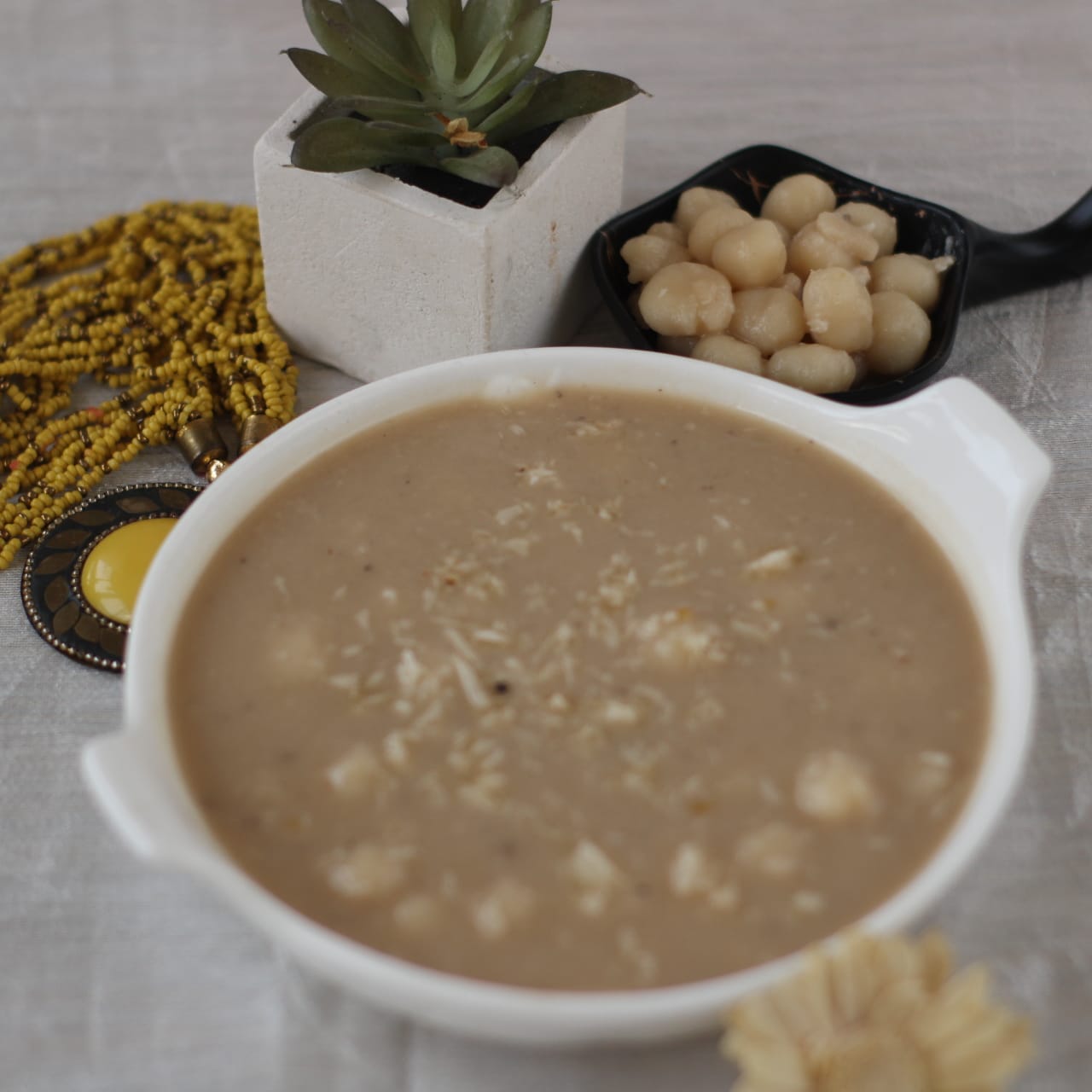
Needed Ingredients To Make The Best Paal Kozhukatta:
Rice Flour: The primary ingredient of Paal Kozhukatta, rice flour, forms the base for the dumplings, providing a soft and slightly chewy texture.
Coconut Milk: Freshly extracted coconut milk, used generously, imparts a rich and creamy consistency to the dessert, along with a subtle coconut flavor.
Jaggery or Brown Sugar: Jaggery or brown sugar serves as the natural sweetener, adding sweetness and depth of flavor to the dessert, and sometimes it's infused with cardamom for aroma.
- Cardamom Powder: A pinch of cardamom powder is often added to Paal Kozhukatta, infusing it with a delightful aromatic essence and a touch of warmth.
- Grated Coconut: Grated coconut is an essential component, both for making coconut milk and as a garnish, enhancing the dessert's coconut goodness and adding texture to the dish.
- Nuts: Cashew nuts and raisins, sautéed in ghee, are popular toppings for Paal Kozhukatta, contributing a delightful crunch and nutty sweetness.
- Ghee: Ghee, or clarified butter, is occasionally used for tempering or garnishing the dessert, lending a rich and nutty flavor.
Step Wise Directions To Make Delicious Paal Kozhukatta:
Prepare the Rice Dumplings: Begin by kneading rice flour with water and a pinch of salt to form a pliable dough. Shape the dough into small dumplings, typically cylinders or ovals.
Make Coconut Milk: Extract coconut milk from freshly grated coconut. Strain it to get thick milk, which is used to make Paal Kozhukatta creamy.
Prepare Jaggery Syrup: Dissolve jaggery in water, creating a sweet and aromatic syrup, often infused with cardamom for added flavor.
Cook the Rice Dumplings: Boil water in a pot and cook the rice dumplings until they float to the surface, indicating they are done. Remove them and set aside.
Assemble the Dish: Place the cooked dumplings in a serving dish and pour the sweet jaggery syrup over them, followed by a drizzle of thick coconut milk.
Optional Tempering: Heat ghee in a pan and sauté cashew nuts and raisins until golden brown. Pour this tempering over the Paal Kozhukatta for added flavor and texture.
Garnish with Grated Coconut: Finally, garnish with grated coconut, which adds a fresh and delightful texture to the dessert. Paal Kozhukatta is now ready to be enjoyed.
In a mixing bowl, combine the rice flour and a pinch of salt.
Gradually add water, a little at a time, and knead the mixture to form a smooth and pliable dough. The dough should not be too dry or too sticky.
Pinch off small portions of the dough and roll them into small dumplings or kozhukattas. You can shape them into small cylinders or ovals. Keep them aside.
If you're using jaggery, break it into small pieces and dissolve it in 1/2 cup of water over medium heat.
Strain the jaggery syrup to remove impurities and set it aside.
If you're using brown sugar, you can skip this step.
In a large pot, bring water to a boil.
Add the rice dumplings to the boiling water.
Cook them until they float to the surface, which should take about 5-7 minutes.
Remove the cooked dumplings from the water and set them aside.
In a blender, add the fresh grated coconut and 2 cups of water.
Blend the mixture until the coconut is well-ground, and you have coconut milk.
Strain the coconut milk through a fine sieve or cheesecloth to extract the liquid. This is your coconut milk.
Add the rice dumplings to a vessel and heat it in low flame. Pour in the jaggery syrup and when it starts to blend, add the coconut milk. Stir in altogether and adjust the consistency with a little more coconut milk. Let it boil for a minute or two and when it turns aromatic just garnish with some grated coconut and ghee or with roasted nuts. Serve warm in a traditional serving bowl.
Tips And Tricks To Get The Best Result:
Consistent Rice Flour Dough: Ensure that the rice flour dough is neither too dry nor too sticky. Knead it to a smooth and pliable consistency for evenly cooked dumplings.
Proper Shaping: Shape the rice flour dumplings uniformly to ensure they cook evenly. Consistency in size and shape helps in achieving consistent texture.
Use Fresh Coconut: Use freshly grated coconut to extract coconut milk for the best flavor and creaminess. Avoid using canned coconut milk whenever possible.
Jaggery Quality: If using jaggery, choose good-quality jaggery, as it greatly influences the taste of the dish. Make sure to dissolve it completely to avoid any grittiness.
Tempering: If using ghee, cashew nuts, and raisins for tempering, ensure they are sautéed until they are golden brown but not burnt. This adds a delightful crunch and aroma to the dessert.
Simmer, Don't Boil: When heating the coconut milk and jaggery syrup, avoid boiling them. Simmer gently to prevent curdling or separation of the coconut milk.
Balance Flavors: Taste as you go and adjust the sweetness to your preference. You can add more jaggery or sugar if you desire a sweeter dessert.
Serve Warm or at Room Temperature: Paal Kozhukatta is best enjoyed when it's warm or at room temperature. This allows the flavors to meld together beautifully.
Garnish Carefully: Be mindful while garnishing with grated coconut to avoid overpowering the dish. A light sprinkle is sufficient for added texture and flavor.
By following these tips, you'll be well on your way to making a perfect batch of Paal Kozhukatta that's sure to delight your taste buds and those of your loved ones.
Faqs:
What is Paal Kozhukatta?
- Paal Kozhukatta is a traditional South Indian dessert, especially popular in Kerala, made from rice flour, coconut milk, and sweeteners like jaggery or brown sugar.
What does "Paal Kozhukatta" mean?
- "Paal" means milk, and "Kozhukatta" refers to dumplings in Malayalam. So, Paal Kozhukatta translates to "milk dumplings."
Is Paal Kozhukatta sweet or savory?
- Paal Kozhukatta is a sweet dessert, featuring sweet rice flour dumplings served in a sweet coconut milk and jaggery (or sugar) sauce.
What occasions is Paal Kozhukatta typically prepared for?
- Paal Kozhukatta is commonly prepared during festivals, special occasions, and family gatherings in Kerala. It is also offered as prasadam (sacred offering) in some Hindu temples.
What are the key ingredients in Paal Kozhukatta?
- The main ingredients are rice flour, coconut milk, jaggery or brown sugar, and sometimes cardamom for flavor. Optional garnishes include ghee, nuts, raisins, and grated coconut.
Can I use canned coconut milk instead of fresh coconut milk?
While fresh coconut milk is preferred for the best flavor, you can use canned coconut milk as a substitute if fresh not available. However, dilute it as necessary to achieve the desired consistency.
- Can I make Paal Kozhukatta without jaggery or sugar?
While jaggery or sugar is essential for the sweetness of Paal Kozhukatta, you can adjust the quantity to your taste. Some variations also use alternative sweeteners like palm sugar.
- Are there regional variations of Paal Kozhukatta in South India?
Yes, different regions in South India have their own variations of this dessert, with slight differences in ingredients and preparation methods. For example, Chettinad Paal Kozhukattai is a variant from the Chettinad region of Tamil Nadu.
- Is Paal Kozhukatta gluten-free?
Yes, Paal Kozhukatta is naturally gluten-free as it is made from rice flour and does not contain wheat or other gluten-containing grains.
Paal Kozhukatta In A Nutshell:
- Nature: Sweet Dumpling
- Color: Creamy White
- Fragrance: Aromatic Coconut
- Flavor: coconut milky
- Taste: mildly sweet
- Texture: Soft-Chewy Delight
Perfect Pairings For Paal Kozhukatta:
Chai (Tea): A warm cup of kattan chai is an excellent choice to enjoy alongside Paal Kozhukatta. The robust flavors of chai contrast beautifully with the dessert's sweetness.
Cardamom Coffee: South Indian filter coffee infused with cardamom provides a fragrant and flavorful contrast that complements the creamy sweetness of Paal Kozhukatta.
Fresh Fruits: Serve a small plate of freshly sliced bananas 9nendra pazham) or ripe jackfruit alongside Paal Kozhukatta. The natural sweetness and freshness of the fruits balance the dessert.
Roasted Papad: Some people enjoy the combination of the sweet dessert with the savory crunch of roasted papad (papadum). It creates a delightful contrast of flavors and textures.
An Alluring Native Scenario Where You Can Typically Enjoy The Paal Kozhukatta To The Fullest:
One of the most pleasant native Kerala scenarios to savor Paal Kozhukatta to the fullest would be at a serene and lush backwater location. Picture yourself sitting on the veranda of a traditional Kerala houseboat, gently gliding through the calm and picturesque backwaters. The soothing sound of rippling water, the swaying palm trees, and the vibrant greenery of the surrounding landscape create a tranquil atmosphere.
As you indulge in each bite of the creamy and coconut-infused Paal Kozhukatta, you can watch the local fishermen in their wooden canoes, people washing clothes on the banks, and colorful birds flitting about. The gentle breeze carries the scent of the backwaters and the distant aroma of spices from a nearby kitchen, enhancing the sensory experience.
This idyllic setting allows you to relish the flavors of Kerala while immersed in its natural beauty, making every bite of Paal Kozhukatta a truly unforgettable and harmonious experience.
The Takeaway:
In the realm of desserts, Kerala's Paal Kozhukatta stands as a sweet masterpiece that embodies the heart and soul of this picturesque South Indian state. Its simplicity, with a handful of humble ingredients, belies the extraordinary joy it imparts. With each delicate mouthful, it sings a melody of sweetness, a chorus of traditions passed down through generations.
Paal Kozhukatta is not just a dessert; it's a cherished cultural emblem, a symbol of Kerala's warm hospitality and the rich tapestry of flavors that define its culinary heritage. This sweet delight is a testament to the beauty of simplicity, proving that the most unassuming dishes often hold the power to transport us to a world of pure, comforting, and delectable bliss. And it is our moral responsibility to pass on these culinary treasures to the next generation with its awe inspiring history and inspiring gastronomic journey.
Happy Cooking!
Ingredients
Directions
In a mixing bowl, combine the rice flour and a pinch of salt.
Gradually add water, a little at a time, and knead the mixture to form a smooth and pliable dough. The dough should not be too dry or too sticky.
Pinch off small portions of the dough and roll them into small dumplings or kozhukattas. You can shape them into small cylinders or ovals. Keep them aside.
If you're using jaggery, break it into small pieces and dissolve it in 1/2 cup of water over medium heat.
Strain the jaggery syrup to remove impurities and set it aside.
If you're using brown sugar, you can skip this step.
In a large pot, bring water to a boil.
Add the rice dumplings to the boiling water.
Cook them until they float to the surface, which should take about 5-7 minutes.
Remove the cooked dumplings from the water and set them aside.
In a blender, add the fresh grated coconut and 2 cups of water.
Blend the mixture until the coconut is well-ground, and you have coconut milk.
Strain the coconut milk through a fine sieve or cheesecloth to extract the liquid. This is your coconut milk.
Add the rice dumplings to a vessel and heat it in low flame. Pour in the jaggery syrup and when it starts to blend, add the coconut milk. Stir in altogether and adjust the consistency with a little more coconut milk. Let it boil for a minute or two and when it turns aromatic just garnish with some grated coconut and ghee or with roasted nuts. Serve warm in a traditional serving bowl.

